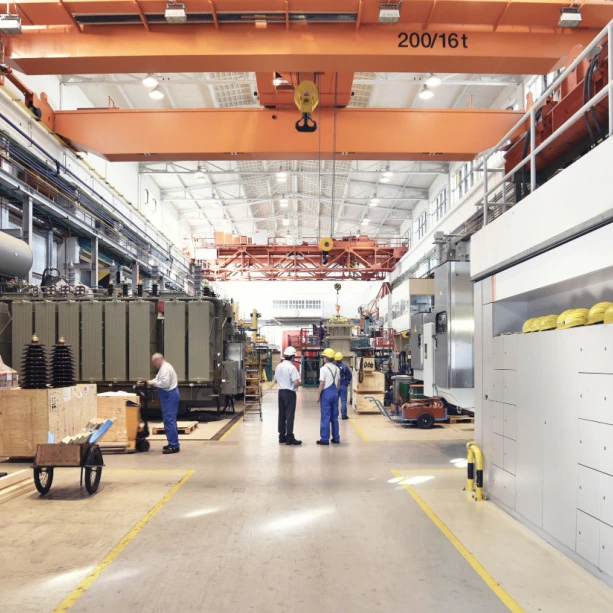Overprocessing is a common problem for manufacturers in which materials are wasted by a product going through a stage of the production process more times than necessary. This results in more money being spent on materials, more time being spent on a single product, and in the worst-case scenario, the product itself being destroyed. As one can expect, none of these outcomes are ideal.
However, there is a solution to be had in WIP tracking and the process visibility it provides. But to understand this solution and why it works, we must first understand what overprocessing is, what it looks like, and why it happens in the first place.
Identifying Overprocessing and Reprocessing
Overprocessing and reprocessing both describe a recurring problem for manufacturers where a product spends more time in production than necessary. This could mean that a product accidentally went through a given stage more than once or it was never meant to go through that stage in the first place. Overprocessing is a problem for operators because it wastes materials, prolongs the production cycle, and sometimes even destroys the product entirely. This can take many forms. Three of the most common include:
Aesthetic alterations to hidden components.
Depending on what you’re manufacturing, some parts will not be visible to the consumer in the finished product. Typically, these components do not have to be bound by the same aesthetic standards as the outward-facing components. For instance, it doesn’t matter what the machinery inside a car looks like as long as it fulfills its purpose. However, parts with inconsequential imperfections are sometimes sent back through production for mending against the standard procedure. While it’s good to have pride in your work, this kind of overprocessing results in wasted materials and wasted time, which ultimately causes more harm than good.
Unnecessary repackaging of finished products.
Sometimes, finished products are packaged more than once. At times, this is simply a logistical mistake, where instead of moving to storage, the product gets added back into the line. At other times, products are packaged incorrectly and must have their packaging removed before being reentered into the process. This might be because a box or pallet is incomplete or the product is simply incorrectly positioned during packaging. Regardless, repackaging results in wasted resources and wasted time.
Accidental repetition of production stages.
The most common form of overprocessing can also be referred to as reprocessing. Reprocessing occurs when a product goes through the same production stage more than once rather than continuing through the rest of the process. In the best case scenario, all this does is prolongs the production cycle and wastes raw material. In the worst-case scenario, the product is completely ruined and must be scrapped altogether. This is particularly an issue when a product requires a careful balance of chemicals or other additives to serve its intended purpose.
Increase Your ROI by Investing in AirFinder OnSite
- Low Cost. AirFinder OnSite XLE is a fraction of the cost of competitors' pricing.
- Long Battery Life. XLE lasts up to 7 years with hundreds of location updates daily.
- Increased Efficiency. Spend less time looking for assets, and more time being productive.
Why Overprocessing Happens in Manufacturing Plants
If overprocessing is so bad and results in costly losses and destruction, why does it happen? The truth of the matter is that it’s easy to make oversights that lead to overprocessing, especially when a plant is busy and moving at a fast pace. It’s as simple as forgetting to mark your WIP’s stage properly, mismarking it unintentionally, or simply misreading someone else’s markings in a rush. It’s an honest mistake that anyone could make in those conditions.
The downfall is often a result of a manual, fallible system that requires workers to take the time to properly record and read production notes. The environment of a plant floor is simply not conducive to that level of attention to detail. Instead, the emphasis is on increasing the speed of the process, which actively punishes workers for taking the extra time needed to avoid overprocessing. What, then, is the solution?
Preventing Overprocessing with WIP Tracking
Work in Process (WIP) tracking can be described as the tracking of inventory after it has entered the production process and retaining visibility throughout the entirety of the process. Unlike general inventory management, it’s not tracking that’s just concerned with the storage and usage of raw materials or finished products, although that often is another element. Rather, it’s tracking that is also concerned with the progression of inventory from the beginning of the process to the end, including how long it takes in each stage and where it is stored between those stages.
This type of tracking is uniquely equipped to help prevent overprocessing. Overprocessing typically results from incorrect or incomplete paper trails. WIP tracking does not rely on paper trails but maintains an automated record of where the product is and where it has already been. This makes it much easier to know where it goes next and what steps have already been completed. WIP tracking ensures that production stages are not repeated and allows workers to balance the time a product has been worked on with the urge to conduct unnecessary aesthetic changes. This helps save time and money through a streamlined process.
An Asset Tracking Solution for Work in Process
WIP tracking comes with additional benefits beyond helping to prevent overprocessing. The data provided on how long each production stage takes can help operators identify and address bottlenecks in real-time. Further, WIP tracking helps automate the reporting process, which frees up time for workers and operators alike. It also helps retain asset visibility, preventing raw materials and processed products from being misplaced.
Link Labs provides a complete asset tracking solution for work in process that helps companies prevent overprocessing and maintain real-time visibility of their production process. We work with you to scale to your company’s size and needs. To learn more about what a WIP tracking solution might look like for you and your company, book a demo with us today.





